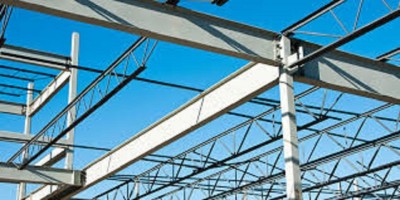Cutting-edge Fads in Steel Fabrication: Enhancing Toughness and Accuracy
In the realm of steel manufacture, the quest of resilience and precision has actually resulted in a wave of innovative fads that are reshaping the industry. From innovations in welding innovations to the integration of robot automation in construction processes, the landscape of steel manufacturing is evolving swiftly. High-strength alloy development, combined with the usage of 3D modeling and simulation software, is pressing the borders of what is possible in regards to architectural integrity and accuracy. In addition, the expanding emphasis on sustainable techniques in steel manufacturing is not just driving effectiveness however additionally fostering an extra ecologically mindful method to manufacture. These patterns are not simply shaping today but likewise laying the foundation for the future of steel construction, assuring more enhancements in longevity and accuracy.
Advanced Welding Technologies
In the realm of steel fabrication, the adoption of sophisticated welding technologies has actually significantly revolutionized the sector's approach to accomplishing superior top quality and precision in structural welds. Advanced welding innovations, such as laser light beam welding and rubbing stir welding, have actually arised as game-changers in the field. By leveraging these sophisticated welding techniques, steel producers can elevate the resilience, strength, and accuracy of their architectural welds, fulfilling the progressively requiring demands of modern building jobs.
Robot Automation in Manufacture
Embracing robot automation has become a foundation of contemporary steel manufacture methods, improving procedures and enhancing efficiency throughout the industry. Robotics are reinventing the way steel components are manufactured, using unrivaled precision and rate while reducing human error. These automated systems can deal with repeated tasks with regular accuracy, leading to better output.
One key advantage of robot automation in steel fabrication is the capacity to function all the time without tiredness, significantly boosting production outcome. This continuous operation lessens downtime and increases job timelines, inevitably conserving expenses for producers. In addition, robotics can be set to execute intricate jobs that might be challenging or hazardous for human employees, boosting security in the workplace.
Furthermore, robot automation allows smooth integration with other digital innovations, such as computer-aided design (CAD) software application and Internet of Points (IoT) systems (metal fabrication melbourne). This interconnected method enhances interaction between different stages of construction, enhancing operations and ensuring real-time surveillance and control. As the steel construction market remains to progress, robotic automation attracts attention as a transformative force driving effectiveness and accuracy in making procedures

High-Strength Alloy Growth
The innovation of high-strength alloy advancement in steel fabrication is improving the industry's method to enhancing product durability and efficiency. High-strength alloys are engineered to exhibit premium mechanical properties, such as raised tensile strength, toughness, and corrosion resistance contrasted to traditional steel qualities. By integrating these innovative alloys into construction processes, suppliers can produce components that steel fabricators melbourne stand up to higher stress degrees and severe environments, resulting in even more trustworthy and resilient final product.
One key benefit of high-strength alloy growth is the ability to minimize material thickness without endangering architectural stability. This not only leads to lighter-weight components but also adds to set you back savings and enhanced effectiveness in construction and setting up processes. The boosted strength-to-weight ratio of these alloys allows for the layout and construction of frameworks with greater load-bearing abilities while minimizing general weight.
3D Modeling and Simulation Software
Improvements in steel manufacture processes have actually been dramatically driven by the assimilation of sophisticated 3D modeling and simulation software program tools. These tools permit makers to develop in-depth online models of their jobs, allowing them to visualize the end product with accuracy prior to any type of manual labor starts. By imitating numerous anxiety elements, environmental problems, and structural tons, fabricators can optimize layouts for enhanced resilience and performance. Additionally, 3D modeling and simulation software improve the production process by identifying potential problems at an early stage, lowering the need for pricey rework and decreasing material waste.

Sustainable Practices in Steel Production
Incorporating sustainable practices right into steel manufacturing processes is important for minimizing environmental impact and guaranteeing long-lasting resource availability. One essential sustainable practice is the adoption of energy-efficient modern technologies to lower greenhouse gas emissions throughout the steel production process. This consists of using renewable resource resources, such as solar or wind power, to power steel plants and implementing energy-efficient equipment to enhance energy usage.
One more important element of sustainable steel production is the responsible sourcing of raw products. This includes ensuring that the iron ore and other sources made use of in steelmaking are gotten from ecologically friendly and ethical resources. By promoting transparency in the supply chain and adhering to strict ecological requirements, steel manufacturers can decrease the negative impacts of source extraction on neighborhood communities and communities.

Verdict
In conclusion, the cutting-edge patterns in steel construction such as innovative welding modern technologies, robot automation, high-strength alloy advancement, 3D modeling and simulation software application, and sustainable practices are improving the toughness and accuracy of steel products. These innovations are changing the steel fabrication industry by boosting high quality, performance, and sustainability. It is clear that the future of steel fabrication hinges on accepting these innovative technologies to meet the demands of modern-day building and manufacturing sectors.
In the world of steel fabrication, the quest of resilience and accuracy has led to a wave of ingenious patterns that are reshaping the industry.In the world of steel fabrication, the adoption of advanced welding technologies has actually considerably reinvented the market's method to attaining superior top quality and precision in architectural welds. As the steel manufacture market proceeds to advance, robot automation stands out as a transformative force driving performance and precision in making processes.
Furthermore, recycling and recycling steel scrap and waste products play a substantial role in boosting the sustainability of steel manufacturing. metal fabrication melbourne.In final thought, the cutting-edge patterns in steel fabrication such as advanced welding modern technologies, robot automation, high-strength alloy advancement, 3D modeling and simulation software application, and lasting methods are improving the resilience and accuracy of steel products